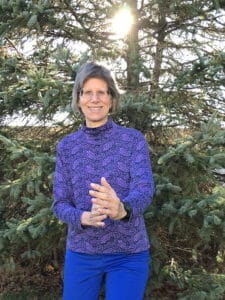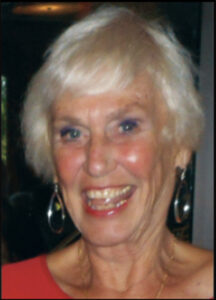By Barbara Pierce

Regular physical activity is one of the most important things you can do for your health.
Physical activity can prevent or delay many of the health problems that seem to come with age.
Staying active and moving regularly is crucial to continuing to live independently, preventing falls, improving physical and mental health and managing chronic conditions.
“Exercise is the most potent drug in our arsenal,” says physician Peter Attia in his book “Outlive, the Science and Art of Longevity.”
“The data is clear; exercise not only delays death but also prevents both cognitive and physical decline better than any other intervention,” Attia says in his book.
Moving is one of the best ways to age well and to help reduce the risk of developing heart disease, diabetes and obesity.
What happens when you’re not active? You may become constipated, your joints become stiff, you’re out of breath easier, you may be moody, may feel tired much of the time, don’t sleep well, you may be forgetful, your blood pressure goes up, your back hurts, your immune system falters, you eat more and gain weight, you lose muscle strength and endurance.
Pretty bleak picture, right?
Yes, physical activity is critically important. It’s the key to well-being. The one thing that helps us age as best we can.
No matter how old you are, how inactive or how out of shape you are, being physically active is essential. Do things that you enjoy, so you’ll stick with it — like working in your garden, walking, dancing, sports, yoga, tai chi, going for a bike ride.
Doing what you enjoy is important.
“I was in my 50s when I began the practice of yoga,” said 77-year-old Lorraine Arsenault of Canastota. “I had a knee issue that kept me from impact sports and I needed a way to stay active. I also had a lot of stress in my life. Consistent practice brought me to my center, healed what needed to be healed so at 58, I trained to be a teacher. I’ve been teaching ever since.”
Arsenault is the founder and operator of The Place at Center in Canastota where she teaches yoga. “My mission is to bring yoga to anyone who seeks it,” she said.
“I believe we’re never too old to start yoga or tai chi,” she added. “There are modifications to make these practices accessible to everyone. For those who aren’t comfortable getting to the floor, we offer chair yoga. For those with chronic health conditions, sleep issues, limited mobility and especially those seeking stress relief, we offer restorative yoga. There’s a practice for everybody.
“It’s a fact that, as we age, we become more anxious, bones and muscles weaken, joints stiffen, breathing becomes more shallow and balance declines. Both yoga and tai chi are meditative practices that promote calmness, flexibility, strength, increase lung capacity and improve posture and balance.”
Marchell Scarano, a 72-year-old Little Falls resident, also enthusiastically embraces yoga. The owner and operator of Yoga and Wellness in Little Falls, she has found yoga helps her age well.
“When I was 68, my doctor said ‘You have no arthritis in your knees. That’s very unusual for a person your age. The yoga practice you’ve done helped much. Your bones are great.’”
Four years ago, Scarano was in a severe car accident, hit head-on by a truck.
“It shattered my leg and both bones in my arms,” she said. “I was severely injured. I’d been doing all the traditional aerobics. But I realized what I’d been taught didn’t work. I turned to yoga for flexibility and strength.”
Yoga brought her through to recovery.
“I definitely recommend yoga,” she said. “At my studio, we do several different types of yoga. I just started a chair yoga class. Now I have three classes, with people older than 60. Many have had knee or hip replacements or cancer.
“Many had never done anything physical, but found they needed more flexibility. Once you lose your flexibility, you lose so much.”
Like yoga, tai chi has significant benefits for older folks.
“Tai chi is a slow-moving meditative exercise that began in ancient China years ago,” said instructor Rosann Scalise. “Tai chi consists of fluid, gentle movements that are relaxed and slow in tempo. It can be practiced anywhere and is a suitable form of exercise for just about anyone. It has demonstrated under studies to have a powerful effect on health.”
Scalise teaches a beginner class offered by the Dolgeville-Manheim Public Library, at the Bassett Community Center, and an advanced class offered by the Mohawk Valley Center for the Arts, at the Little Falls Library. The classes are free.
“Newcomers are welcome,” she added. “The students really enjoy the program. They’ve told me their balance has improved, they walk and stand better, they feel surer on their feet and feel calmer and relaxed.”
You can come up with a million reasons for not being physically active. Some might be valid. But remember: stillness is bad in so many ways.
 Barbara Pierce is a retired licensed clinical social worker with many years of experience helping people. If you would like to purchase a copy of her book, “When You Come to the Edge: Aging” or if you have questions for her, contact her at barbarapierce06@yahoo.com.
Barbara Pierce is a retired licensed clinical social worker with many years of experience helping people. If you would like to purchase a copy of her book, “When You Come to the Edge: Aging” or if you have questions for her, contact her at barbarapierce06@yahoo.com.
